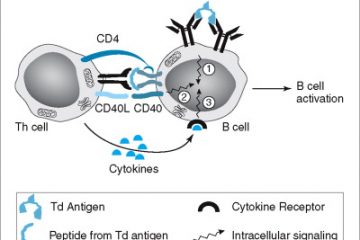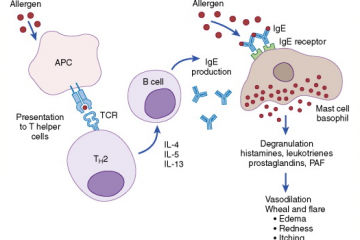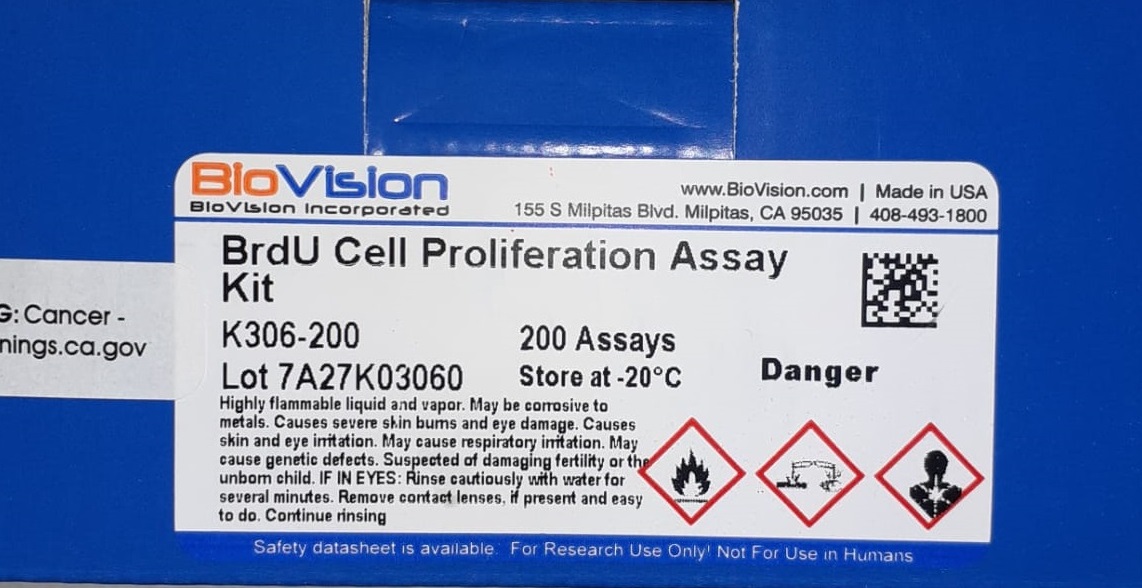Monoclonal antibodies and their side effects
One way the body’s immune system attacks foreign substances is by producing large numbers of antibodies. An antibody is a protein that attaches to a specific protein called an antigen. The antibodies circulate throughout the body until they find and attach to the antigen. Once attached, they can force other parts of the immune system to destroy the cells that contain the antigen.
Researchers can design antibodies that specifically target a certain antigen, such as that found on cancer cells. They can then make many copies of that antibody in the lab. These are known as monoclonal antibodies (mAbs or Moabs). Monoclonal antibodies are used to treat many diseases, including some types of cancer. To make a monoclonal antibody, researchers first have to identify the correct antigen to attack.
Finding the right antigens for cancer cells isn’t always easy, and so far mAbs have proven more useful against some types of cancer than others. NOTE: Some monoclonal antibodies used to treat cancer are called targeted therapy because they have a specific target on a cancer cell that they seek out, attach to, and attack. But other monoclonal antibodies act as immunotherapy because they make the immune system respond better to allow the body to find and attack cancer cells more effectively.
What are mAbs made of?
Monoclonal antibodies are man-made proteins that act like human antibodies in the immune system. There are 4 different ways they can be made and they are named according to what they are made of.
- Murine: These are made from mouse proteins and the treatment names end in -omab.
- Chimeric: These proteins are a combination of part mouse and part human, and treatment names end in -ximab.
- Humanized: These are made from small pieces of mouse proteins linked to human proteins and the treatment names end in -Zumba
- Human: These are fully human proteins and treatment names end in -umab.
Types of mAbs used to treat cancer
1. Naked monoclonal antibodies
Naked mAbs are antibodies that do not have any drug or radioactive material attached to them. They work alone. These are the most common type of mAbs used to treat cancer. Most naked mAbs attach to cancer cell antigens, but some work by binding to antigens from other non-cancer cells or even free-floating proteins. Naked mAbs can function in different ways.
- Some stimulate a person’s immune response against cancer cells by attaching to them and acting as a marker for the body’s immune system to destroy them. One example is alemtuzumab (Campath®), which is used to treat some patients with chronic lymphocytic leukaemia (CLL). Alemtuzumab binds to the CD52 antigen, which is found on cells called lymphocytes (which include leukaemia cells). Once attached, the antibody attracts immune cells to destroy them.
- Some naked mAbs increase the immune response by targeting immune system checkpoints.
- Other naked mAbs work mainly by binding to and blocking antigens on cancer cells (or other nearby cells) that help cancer cells grow or spread. For example, trastuzumab (Herceptin) is an antibody against the HER2 protein. Breast and stomach cancer cells sometimes have large amounts of this protein on their surface. When HER2 is activated, it helps these cells grow. Trastuzumab binds to these proteins and prevents them from being activated.

2. Conjugated monoclonal antibodies
Conjugated mAbs are combined with a chemotherapy drug or a radioactive particle. These mAbs are used as a reference device to deliver one of these substances directly to cancer cells. The mAb circulates throughout the body until it can find and latch onto the target antigen. It then delivers the toxic substance where it is needed most. This reduces damage to normal cells in other parts of the body. Conjugated mAbs are also sometimes referred to as tagged, labelled, or charged antibodies.
- Radiolabeled antibodies: Radiolabeled antibodies have tiny radioactive particles attached to them. Ibritumomab tiuxetan (Zevalin) is an example of a radiolabeled mAb. This is an antibody against the CD20 antigen, which is found on lymphocytes called B cells. The antibody delivers radioactivity directly to cancer cells. It is made up of a mAb drug (rituximab) and a radioactive substance (yttrium-90). Treatment with this type of antibody is sometimes called radioimmunotherapy (RIT). The drug and radiation are delivered directly to the target cells because the mAb seeks out the target, then the radiation affects the target and nearby cells to some extent.
- Chemolabelled antibodies: These mAbs have powerful chemotherapy (or other) drugs attached to them.
Examples include:
- Brentuximab vedotin (Adcetris), an antibody that targets the CD30 antigen (found on lymphocytes), is attached to a chemotherapy drug called MMAE.
- Ado-trastuzumab emtansine (Kadcyla, also called TDM-1), an antibody that targets the HER2 protein, is attached to a chemotherapy drug called DM1.
3. Bispecific monoclonal antibodies
These drugs are made up of parts of 2 different mAbs, which means they can bind to 2 different proteins at the same time. One example is blinatumomab (Blincyto), which is used to treat some types of leukemia. A part of blinatumomab binds to the CD19 protein, which is found on some leukaemia and lymphoma cells. Another part binds to CD3, a protein found on immune cells called T cells. By binding to these two proteins, this drug binds cancer cells and immune cells, which is thought to cause the immune system to attack cancer cells.
Possible Side Effects of Monoclonal Antibodies
Monoclonal antibodies are given intravenously (injected into a vein). Antibodies themselves are proteins, so giving them can sometimes cause an allergic reaction. This is more common when the medicine is first given. Possible side effects may include:
- Fever
- Shaking chills
- Soft spot
- Headache
- Nausea
- vomiting
- Diarrhoea
- Low blood pressure
- rashes
Compared to chemotherapy drugs, naked mAbs tend to have fewer serious side effects. But they can still cause problems in some people. Some mAbs may have side effects related to the antigens they target. For example:
- Bevacizumab (Avastin) is a mAb that targets a protein called VEGF that affects tumour blood vessel growth. It can cause side effects such as high blood pressure, bleeding, poor wound healing, blood clots, and kidney damage.
- Cetuximab (Erbitux) is an antibody that targets a cellular protein called EGFR, which is found on normal skin cells (as well as some types of cancer cells). This medicine can cause severe skin rashes in some people.


